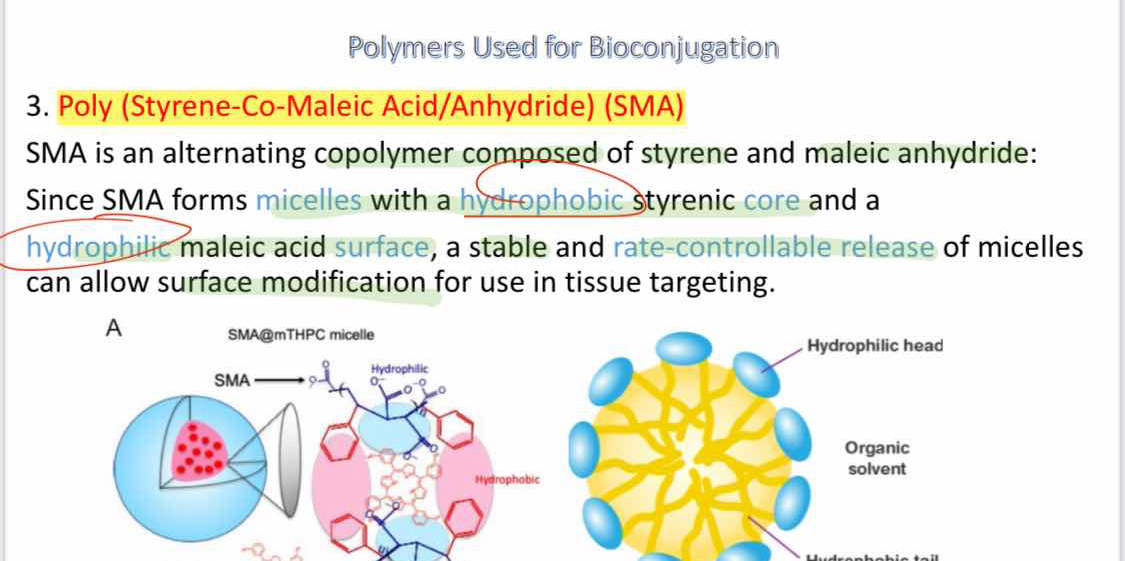
Understand the Problem
The text discusses the characteristics and applications of the copolymer Poly (Styrene-Co-Maleic Acid/Anhydride) (SMA) in bioconjugation, specifically focusing on its micelle formation and surface properties.
Answer
SMA forms micelles with hydrophobic cores and hydrophilic surfaces for tissue targeting.
Poly (Styrene-Co-Maleic Acid/Anhydride) (SMA) is an alternating copolymer forming micelles with a hydrophobic styrenic core and a hydrophilic maleic acid surface. This structure allows for rate-controllable release and surface modification useful in tissue targeting.
Answer for screen readers
Poly (Styrene-Co-Maleic Acid/Anhydride) (SMA) is an alternating copolymer forming micelles with a hydrophobic styrenic core and a hydrophilic maleic acid surface. This structure allows for rate-controllable release and surface modification useful in tissue targeting.
More Information
Poly (Styrene-Co-Maleic Acid) is useful for bioconjugation due to its amphiphilic nature, creating potential for modifying surfaces in biomedical applications.
Tips
Confusing the hydrophobic core with the hydrophilic surface can lead to errors in application understanding.
AI-generated content may contain errors. Please verify critical information